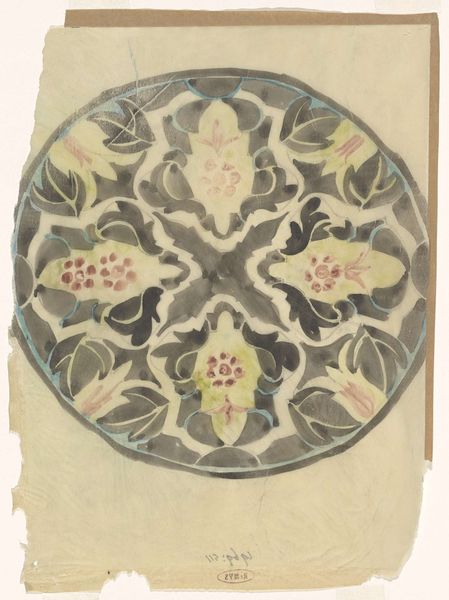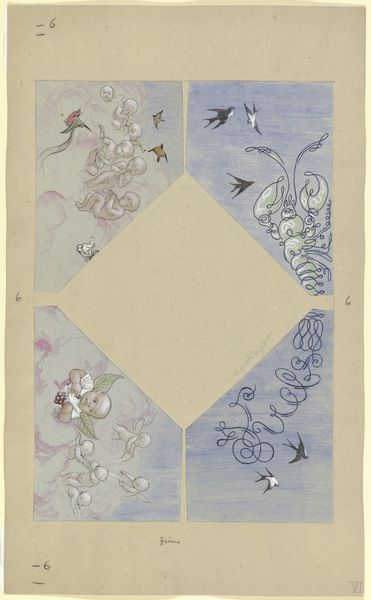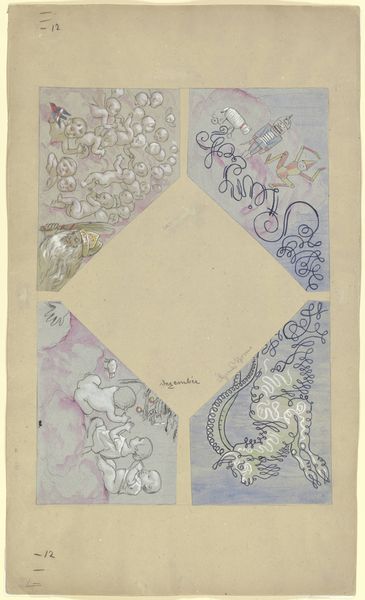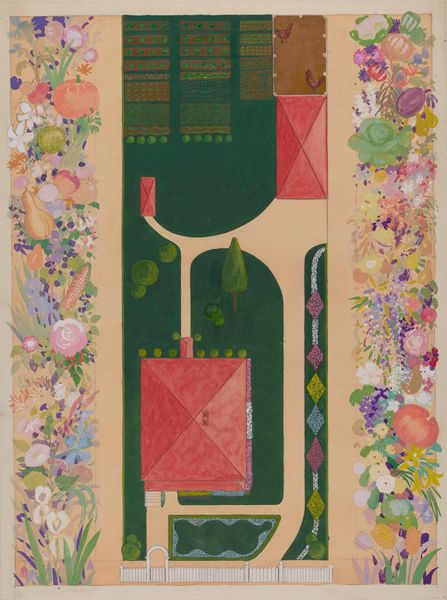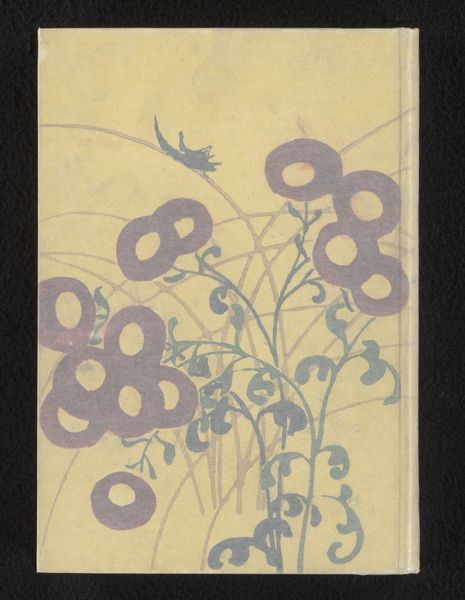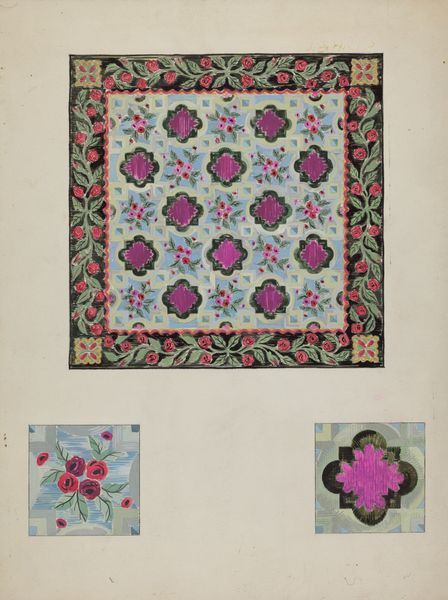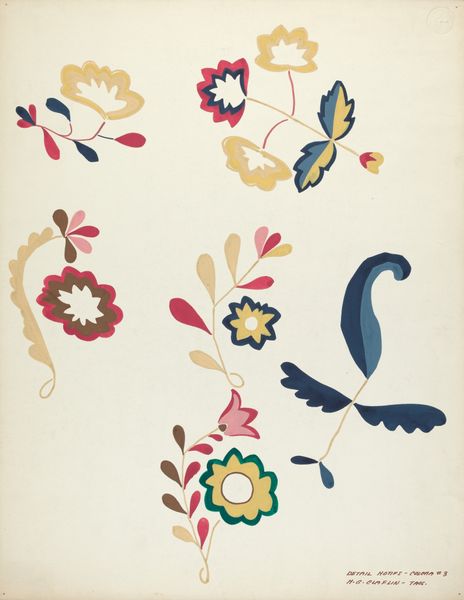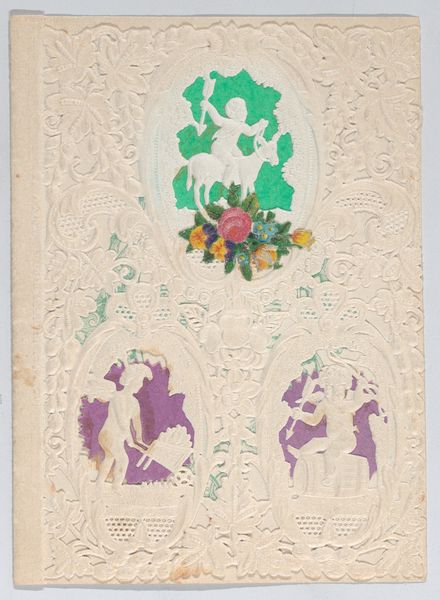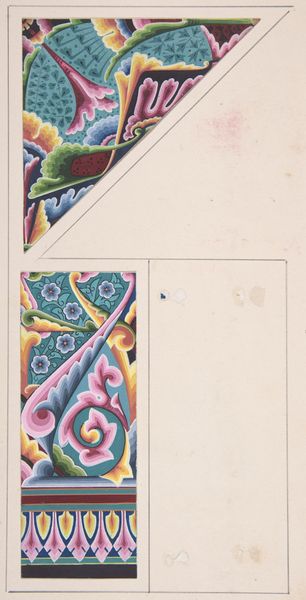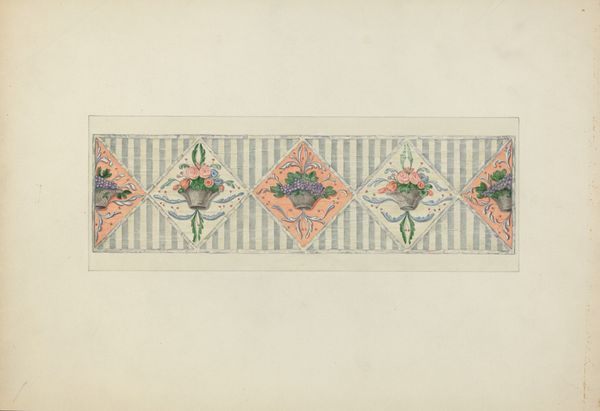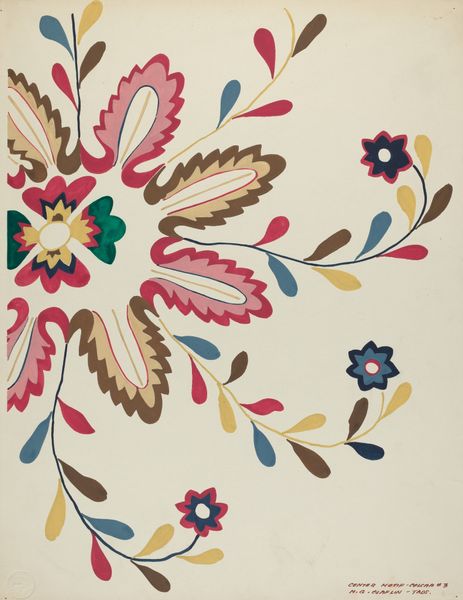
painting, paper
#
painting
#
paper
#
decorative-art
Dimensions: height 589 mm, width 386 mm
Copyright: Rijks Museum: Open Domain
Curator: Welcome. We're standing before an artwork titled "Ontwerp voor zijden stof voor sjaals," dating back to 1925. It’s mixed media on paper – a textile design. What catches your eye first? Editor: It has a distinctly hopeful quality—a little naive perhaps, but also joyful and delicate. I’m wondering who might have worn it, or aspired to wear it. Curator: Let’s consider the composition. We see various groupings of stylized floral motifs combined with geometrical backgrounds and vase elements, employing a muted palette of blues, greens and pinks. The way the artist balances the patterned sections and unfinished elements creates a fascinating tension, don’t you think? Editor: Absolutely, but for me, that tension speaks to something deeper. 1925—this was a time of social upheaval and changing gender roles. The decorative art, particularly in textiles, became a means through which women could participate in the economic and cultural conversation, finding expression and perhaps even financial independence in its creation. Curator: A compelling perspective. Considering the Art Nouveau influence here, do you believe the design embodies a yearning for the organic amidst the rising tide of industrialization and mechanization of the era? It represents the movement toward embracing craft production rather than mechanized factory creation. Editor: Precisely, this piece is far from apolitical. Decoration itself was long deemed “feminine” and frivolous, but the Pattern and Decoration movement actively worked to re-evaluate ornament as an empowering mode of creativity. Designs like this provided opportunities for makers who may not have had formal arts training, yet the works created speak clearly. Curator: Well said! It strikes me how elegantly the anonymous creator manipulates repetition and asymmetry. I see this textile as challenging us to re-think hierarchies of art. Editor: It reminds me how so many artists of color, queer artists, and women, in general, found both meaningful creative experiences and autonomy through textiles and other often-overlooked or “domestic” forms. Curator: Yes. It brings to the forefront how our interpretation, how what we each bring to a piece of art impacts what we find in the exchange. Editor: Ultimately, “Ontwerp voor zijden stof voor sjaals” speaks of potential: both in its incompleteness and in its hopeful evocation of beauty and emancipation.
Comments
No comments
Be the first to comment and join the conversation on the ultimate creative platform.
